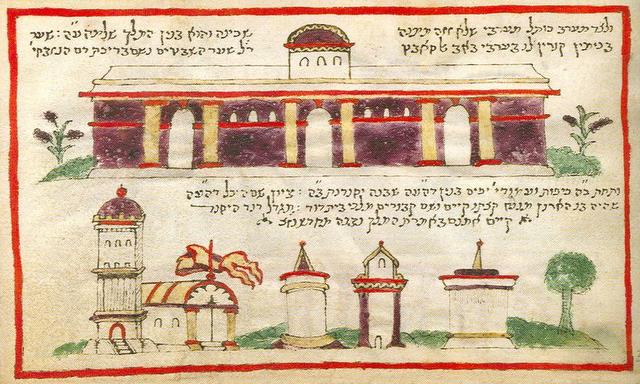Casale Monferrato, Piedmont, Italy, 1598
During the Second Temple period (538 B.C. – 70 A.D.), Jews, particularly males, were required to go on pilgrimage to Jerusalem and the Temple. They did this three times a year on the Pilgrim Festivals – Passover, Shavu’ot (the Festival of Weeks), and Sukot (the Festival of Tabernacles) – as commanded in the Hebrew Bible. After the destruction of the Temple in 70 AD, these pilgrimages continued throughout the Middle Ages. Later, particularly during the nineteenth century, visits to the Holy Land intensified and included the tombs of Jewish biblical figures, such as King David, as well as those of Moses Maimonides and others. Since the reunification of Jerusalem in 1967, the site of the Temple has once again become a magnet for Jewish pilgrims.
Pilgrimage to the Holy Land has yielded a rich and varied Jewish travel literature- personal accounts, pilgrims’ diaries, guides and itineraries to the country’s holy sites, which pious compiled for others to use. This itinerary of the Holy Land may have been written by a professional author rather than by a genuine pilgrim. It features the remains of the Jerusalem Temple, burial sites of biblical matriarchs, patriarchs and prophets, and also the graves of rabbis of the post-biblical period. It may have been modelled on contemporary scrolls of the genealogy of the righteous, as used in Jewish fundraising missions. It belongs to a tradition of illustrated itineraries equally popular with Christians.
John Reeve (ed.). Sacred. British Library. 2007.
